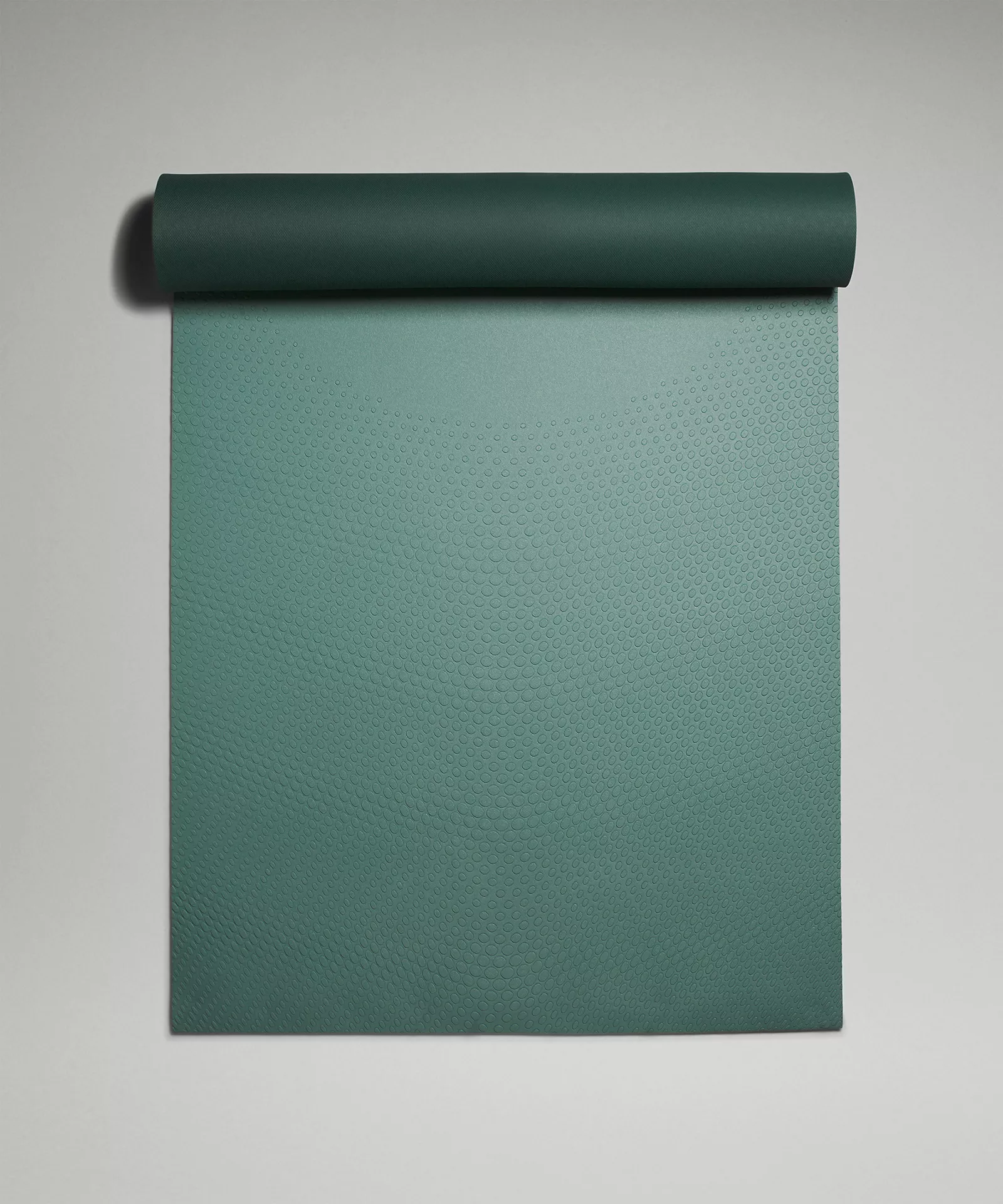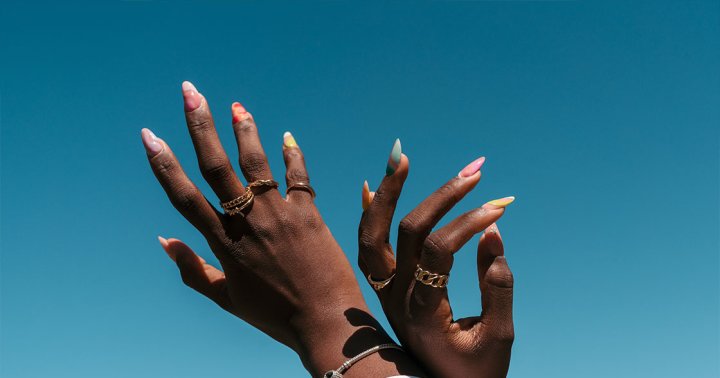Yoga Crocodile Pose Mastery: Your Complete Guide to Makarasana
The post Yoga Crocodile Pose Mastery: Your Complete Guide to Makarasana appeared first on The Yoga Nomads.

Relaxation and stress relief are qualities often associated with a yoga practice. If you ask most yoga students to name the most relaxing pose, most people would likely name Savasana. But there’s another side to relaxing yoga poses — literally!
When you flip your body over to lie face-down on your belly, you’re actually in Crocodile Pose. This is a restorative beginner yoga pose that relaxes your whole body.
It might look like a simple position. But just as a crocodile glides stealthily under the water’s surface, there’s more going on in this yoga pose than you’d expect at a surface glance.
So, let’s take some time to break it down! We’ll bring awareness to alignment, explore the many uses of this pose, and discover what makes Crocodile Pose an essential part of so many yoga sequences!
Where You’ve Seen This Pose Before
If you’ve practiced poses like Cobra or Locust before, chances are you’ve rested in Crocodile Pose, unconscious that you’re in a legitimate yoga pose!
In my own experience as a yoga teacher, I typically cue Crocodile Pose in this way: a chance to let the back muscles relax after a strengthening sequence featuring Locust or Superman. As a resting pose, it’s easy to let ourselves lie there without much thought as we catch our breath.
However, everything in yoga is intentional and serves a purpose. Even transitional or resting yoga poses like Crocodile, which we don’t always give much attention to, offer significant positive effects when practiced independently.
So, although Crocodile is a beginner pose, you’ll find it’s worth adding to your regular library of yoga poses!
Crocodile Pose Background
The standard English name Crocodile Pose comes from a direct translation of its Sanskrit name, Makarasana. When broken down, Makara means “crocodile,” and asana means pose.
Makarasana, or Crocodile Pose, is a traditional pose dating back to at least the 17th century when it was described in the classic yoga text, the Gheranda Samhita. It appeared again (this time illustrated) in the early 20th-century text Yogasopana Purvacatuska.

The Crocodile Pose is aptly named. It resembles the animal gliding through water with its neck and head elevated just above the surface. But remember — things are more than what they seem at first glance, so let’s take a deeper look!
Makara Symbolism
As with most concepts in yoga, we can significantly enhance our experience of the asana by deepening our understanding of its symbolism. This practice helps us find intention and meaning in every asana, even when it is a beginner pose.
Here are some inspiring interpretations of Crocodile Pose:
Duality and balance: The crocodile’s belly is soft and supple, while its back is a hard shell of protection. This is a reminder to seek a balance between sukha (softness or ease) and sthira (effort or strength), both on and off our yoga mats. Emotional connection: This pose is associated with the sacral chakra, which relates to the water element and unconscious, deep emotion. Crocodiles are known for pulling their prey under the water, much in the way our heavy emotions can weigh us down if we don’t pay attention.In past classes I’ve taken when yoga teachers have shared insights like these, it takes the experience of the pose to a higher level. I encourage all instructors to make it a point to give your students something more profound to connect to, no matter how basic a pose may seem!
Detailed Instructions for Makarasana
Now that you’re adequately inspired, let’s get down to it! The floor that is — roll out your yoga mat and follow along with the step-by-step instructions for Crocodile Pose.
Getting into the Crocodile Pose
Since Crocodile Pose has various uses, there are different ways to enter the position. In this guide, we’ll take you into the pose as if you were beginning in Advasana or Belly Savasana.
Start in Belly Savasana: Come down to the ground and lie face-down on your stomach, arms at your sides with your palms facing up. Turn your head with one ear resting on the floor. Your legs should be extended behind you, with the tops of your feet on the floor. Stretch your arms out to the sides with your palms on the floor. Bend your elbows to a 90-degree angle. Keep your elbows bent as you slide your arms above your head, moving from your shoulder joint. Stack your forearms on top of the other as your arms come together. Lift your head, neck, and chest slightly. Turn and place your forehead on top of your stacked forearms. Keep your lower body completely relaxed, with your knees and tops of the feet pressing into your mat. Stay in this Baby Crocodile position for a few long breaths, allowing all the muscles of your upper body to rest.If relaxing is your goal in Crocodile Pose, then you might choose to stay in Baby Crocodile and then release back down to your stomach. On the other hand, if you are intested in more of a gentle stretch for your spine or building strength in your shoulders and core, continue on to the next steps into full Makarasana.
While still in Baby Crocodile, draw your shoulder blades down and across your upper back. Pull your low belly in and up (towards your spine) to engage your core muscles. Press your hands and forearms down to lift your head, neck, and chest. Your forehead should hover a few inches above your arms. Keep your gaze focused slightly forward, just in front of your forearms. Breathe deeply, taking your inhale all the way down into your belly. Feel tension leave your body as you breathe out. Hold this position for several slow, long breaths, then gently release your forehead back down to rest on your arms. Finally, remove your arms from underneath you and return to your starting position, lying flat on your stomach.Remember, each movement is significant! Take it slow, focusing on each step.
Breath Control During Crocodile Pose
Breathing is vital in this pose. Deep, long breaths help relax the entire body.
Crocodile Pose can facilitate better breathing than if you were lying flat. Think about it: with your chest slightly elevated and your abdomen lengthening, your lungs have more room to expand.
Inhale deeply through the nose. Feel your belly expand as your diaphragm depresses. Exhale slowly, feeling your belly deflate as the air exits your lungs.Keep breathing with intention: expand with your inhale, release tension with your exhale. Notice how your body relaxes a little more with each breath.
Key Alignment Points for Safety
Safety first, right? Here are some things to keep in mind:
Maintain length throughout your entire spine — avoid gazing straight ahead, which will compress the cervical spine. Set your gaze down toward the floor. Keep a slight gap between the chin and chest, again, to maintain length in the back of the neck. The position of your lower body can affect your lower back. Lie with your legs separated slightly (about the distance of your hips), with your knees and the tops of your feet on your mat. Your feet should angle slightly inward, big toes touching.These points will ensure a safe and relaxing experience in Crocodile Pose.
Addressing Potential Challenges and Injuries
Common Makarasana Misalignments
Crocodile Pose (Makarasana) might seem like a piece of cake. But don’t be fooled! Just because it’s a beginner pose doesn’t mean there’s no risk of injury. Yoga teachers, look for these common misalignments in your students!
Some students let their shoulders scrunch up towards their ears, which creates rather than releases tension. Remind them to press up and out of the shoulder joint. When the head rests on the arms in Baby Crocodile Pose, let it rest gently without putting pressure on the wrists or tensing the neck. A common mistake yoga students make is rushing to lift the chest without control and without adequately engaging the core. Remember to bring awareness to each movement to get the most out of the pose. Remind students that their elbows should be in front of the shoulders, not directly under them. (That’s more the alignment of Sphinx Pose, which requires more flexibility in the upper regions of the spine!)
Variations and Modifications of Makarasana
First things first — you’ll want to have a high-quality yoga mat; the thicker, the better! Especially if you plan to stay in Crocodile Pose for a few refreshing minutes, a thick yoga mat like this 6mm Workout Mat from Lululemon will keep your elbows and hips from becoming sore.

We Recommend
The Workout Mat 6mm
Prop It Up
For yoga students new to this pose or those with limited flexibility and mobility in the shoulders and back, props can be a game changer. Bolsters or blankets provide extra cushion and support in this pose.
Place a bolster under your belly for added comfort. Or, try using a bolster under the chest for extra support as you take several long breaths. Use a folded blanket under your ankles if they don’t comfortably reach the floor. A blanket under the hips can also help if you practice on a hard surface.
Mindful Meditation Bolster – Black
Contraindications
Although Makarasana is a basic beginner pose, there are some people for whom it might pose a risk.
Pregnant people, for example, should avoid all poses in a prone position. If you happen to be experiencing stomach issues, you also might want to skip this asana for now, as it puts pressure on the abdomen.
People recovering from a shoulder or back injury should check with a medical professional before trying Crocodile, but you may also benefit from a simple modification.
Limited shoulder or spinal mobility: Alter the position slightly by stacking your hands on top of each other rather than the forearms. Let your forehead rest gently on the backs of your hands.Makarasana’s Stress-Relief and Other Benefits

Activating the Parasympathetic Nervous System
Crocodile Pose is a restorative asana that sparks relaxation. It prompts our parasympathetic nervous system to kick in and take over. This system tells our body it’s time to “rest and digest” and is activated when we take deep, diaphragmatic breaths.
Lowering Cortisol Levels
Makarasana also helps keep the stress hormone cortisol in check. Less cortisol means less stress, and who wouldn’t want that?
Enhancing Mental Clarity and Focus
This pose isn’t just about physical relaxation. It also sharpens your mental focus. You’ll notice your mind becoming clearer with each long breath.
Relieving Upper Body Tension and Lower Back Pain
Ever feel like you’re carrying the world on your shoulders? Try the Crocodile pose! It eases shoulder tension in the upper body and lengthens the entire spine.
The spinal extension in Makarasana can also offer relief from slipped discs and sciatica — just be sure to consult your doctor if you experience those issues before performing any yoga or movement practice.
Improving Posture
Sitting at a desk all day can make us hunch our shoulders. But guess what? The crocodile pose stretches out those kinks! You’ll stand taller and feel better. It effectively counteracts the negative impacts of sitting and slouching.
Fostering Breath Awareness
Breathing is vital in yoga, especially in Makarasana. As the chest opens and the side body elongates, the lungs have more room to expand, encouraging deep, healing breaths. Also, awareness of your breathing fosters mindfulness and can help ground your energy.
Pretty impressive for an entry-level asana, right? From activating our relaxation response to enhancing mental clarity and improving posture, Crocodile Pose is helpful in many ways, benefitting the body and mind.
So why not give it a try? Let’s explore how you might work Makarasana into your next yoga sequence.
Incorporating Makarasana into Your Routine
Ideal Time and Duration for Practice
To use Crocodile Pose for its restorative, relaxing effects, spend 5-10 minutes in the position in the evening before you go to bed. Set yourself up with blankets and bolsters for maximum comfort.
Makarasana is also great in the mornings to relieve stiffness accumulated in the back and upper body while sleeping.
Integration within Yoga Sequences
Makarasana can be seamlessly integrated into your yoga sequences. It’s a great beginner pose that preps your body for more challenging poses. You may also use it to rest in between rounds of strength-building exercises.
Here are some ideas for yoga teachers and individuals looking to assemble a sequence with Makarasana.
Building Strength for More Intense Poses: Practicing Makarasana regularly helps build strength and range of motion for more intense poses like Cobra Pose, Locust, and Upward Facing Dog. Complementary Poses: Try pairing the Crocodile Pose with vigorous asanas like Plank, Bow Pose, and Dolphin Pose. These poses all help strengthen the core and increase flexibility. Resting Pose between Exercise Rounds: In between rounds of back-strengthening exercises like Superman and Locust Pose, use Makarasana as a resting position. This allows your body to relax while maintaining engagement in your practice. Counter Pose for Spinal Flexion: After doing poses that involve spinal flexion, like Child’s Pose or Rabbit, use Crocodile as a counter pose. After you stretch your back muscles, you’ll feel relaxation and relief in your spine with Makarasana.Embracing the Power of Makarasana

In yoga, the Crocodile pose (Makarasana) holds a significant place in the vast library of yoga poses. It’s no wonder this asana has endured from its first introduction several centuries ago.
Incorporating Makarasana into your yoga sequences or daily routine can be a game-changer! The stress-relieving benefits of this pose are remarkable, not to mention all the physical healing potential.
And the best part is, with the proper support and some simple pose variations, virtually anyone can do it!
As an instructor, one of the most fascinating and rewarding aspects of yoga is bringing awareness to the unconscious — paying attention to the part of our routines that might seem simple but hold much meaning and intention. That’s what I hope to have shared with you in this exploration of Makarasana!
Now it’s time to try it for yourself! Roll out your yoga mat, glide into the water, and get ready to stretch your whole body with Crocodile Pose!
FAQ 1: Is Makarasana suitable for beginners?
Yes, Makarasana is suitable for beginners. However, it’s always recommended to practice any yoga pose under the guidance of a trained instructor.
FAQ 2: Can I practice Makarasana during pregnancy?
No, this asana is contraindicated for pregnant people as it puts too much pressure on the abdomen. Furthermore, it’s advisable to consult your doctor or a qualified instructor before practicing any new poses during pregnancy.
FAQ 3: How long should I hold the crocodile pose?
For beginners, holding the pose for 1-2 minutes is sufficient, or 10 to 15 long breaths. As you get comfortable with the posture, you can gradually increase this duration.
FAQ 4: What are some common mistakes while doing Makarasana?
Some common mistakes students make include straining the neck or collapsing into the shoulder joint. These can be avoided by following proper instructions and maintaining correct alignment.
FAQ 5: Can I do Makarasana if I have back pain?
While Makarasana can help relieve back tension, it might not suit everyone with back issues. Consultation with a healthcare professional is advised before starting any new exercise regimen, especially if you’re recovering from an injury.
FAQ 6: What other poses can complement Makarasana in my routine?
Poses like Cobra Pose (Bhujangasana), Locust (Salabhasana), and Upward Facing Dog complement Makarasana well, as they also focus on lengthening the spine and strengthening the back muscles.

 KickT
KickT 
































